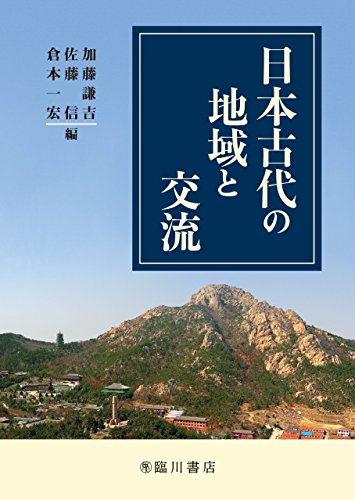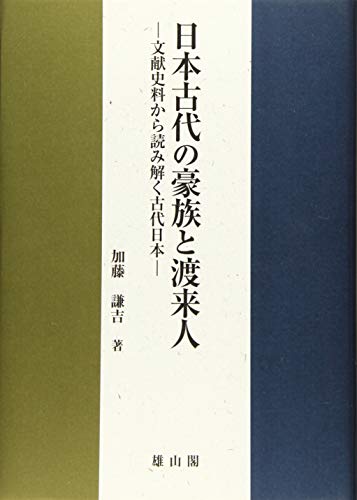1 0 0 0 日本古代の地域と交流
- 著者
- 加藤謙吉 佐藤信 倉本一宏編
- 出版者
- 臨川書店
- 巻号頁・発行日
- 2016
1 0 0 0 日本古代の豪族と渡来人 : 文献史料から読み解く古代日本
1 0 0 0 OA 小学6年生の体育授業における走り幅跳びの練習効果
- 著者
- 土肥 照典 加藤 謙一 秋元 寛次
- 出版者
- 一般社団法人 日本体育学会
- 雑誌
- 体育学研究 (ISSN:04846710)
- 巻号頁・発行日
- vol.49, no.5, pp.457-469, 2004-09-10 (Released:2017-09-27)
- 被引用文献数
- 1
A study was conducted to clarify the effects of running long jump practice in physical education classes for 11-or 12-year-old elementary school children. The subjects were divided into two groups: a training group (9 boys and 8 girls) and a control group (10 boys and 12 girls). The training group performed long jump practice over a period of 2 weeks (5 physical education classes), while the control group performed gymnastics practice. The jumping distance and 50-m sprint time were measured in both groups to clarify the performance before and after the corresponding period. In addition, the training group underwent measurement of approach running distance, approach running speed, take-off leg and jumping motion by angular kinematics. It was found that the jumping distance of the training group increased significantly for both boys and girls. However, no significant changes were found in the control group. After training, the approach running distance in the training group decreased significantly for both boys and girls. After training, there were significant positive correlations between the change in jumping distance and the change in approach running speed in the training group in the sections from 5 to 0 m before take-off in both boys and girls. In addition to the girls, there were significant positive correlations between change in the jumping distance and the change in approach running speed in the sections from 15 to 10 m and from 10 to 5 m before take-off. For boys in the training group, the relationship between the increase in jumping distance and the speed at touch down was significantly positively correlated with take-off. For girls in the training group, there was a significant positive correlation between the increase in jumping distance and the speed at touch down. From these results, it is suggested that long jump practice for 2 weeks (5 times) would improve the jumping distance of sixth-grade elementary school children.
- 著者
- 加藤 謙介 カトウ ケンスケ Kensuke KATO
- 雑誌
- 九州保健福祉大学研究紀要 = Journal of Kyushu University of Health and Welfare
- 巻号頁・発行日
- vol.14, pp.1-11, 2013-03
This study focused on the social issues surrounding the rescue of companion animals during disaster relief efforts. It (1) reviewed previous reports on this topic and applicable laws and (2) performed a quantitative analysis of newspaper articles related to animal rescue in times of disaster from 1985 to 2011. The review was based on three perspectives: self-help, mutual assistance and public assistance. -Based on this review, future responses to animal rescue during disaster were considered.
- 著者
- 加藤 謙介 渥美 公秀 矢守 克也
- 出版者
- 日本グループ・ダイナミックス学会
- 雑誌
- 実験社会心理学研究 (ISSN:03877973)
- 巻号頁・発行日
- vol.43, no.2, pp.155-173, 2004
- 被引用文献数
- 5 3
本研究では,高齢者に対するロボット介在活動(Robot Assisted Activity: RAA)の事例を取り上げ,RAAを,ロボットをめぐる物語の共同的承認の過程であるとして検討した。筆者らは,有料老人ホームに入所する高齢者を対象とした,ペット型ロボットを用いたRAAを実施し,参与観察するとともに,RAA実施中における参加者群の相互作用を,定量的・定性的に分析した。定性的分析の結果,RAA時には,対象となった高齢者のみではなく,施設職員やRAAの進行係等,RAAの参加者全員が,ペット型ロボットの挙動に対して独自の解釈を行い,それを共同的に承認しあう様子が見出された。また,定量的分析の結果,RAA実施中における参加者群の「集合的行動」のうち,最も頻度が多かったのが,「ロボットの動きを参加者群が注視しながら,発話を行う」というパターンであることが明らかになった。筆者らは,RAAを,参加者によるロボットの挙動に対する心の読み取り,及びその解釈の共同的承認を通して物語が生成され,既存の集合性とは異なる集合性,<異質性>が生成される過程であると考察した。<br>
1 0 0 0 OA 新技術による事業開発の動的プロセスモデルの提案
- 著者
- 加藤 謙介 宮崎 久美子
- 出版者
- 研究・イノベーション学会
- 雑誌
- 年次学術大会講演要旨集
- 巻号頁・発行日
- vol.32, pp.500-504, 2017-10-28
一般講演要旨
- 著者
- 加藤 謙吉
- 出版者
- 吉川弘文館
- 雑誌
- 日本歴史 (ISSN:03869164)
- 巻号頁・発行日
- no.724, pp.98-100, 2008-09
1 0 0 0 OA 男子高校生の疾走能力および最大無酸素パワーの発達
- 著者
- 加藤 謙一 山中 任広 宮丸 凱史 阿江 通良
- 出版者
- 社団法人日本体育学会
- 雑誌
- 体育學研究 (ISSN:04846710)
- 巻号頁・発行日
- vol.37, no.3, pp.291-304, 1992-12-01
The purpose of this study was to investigate cross-sectionally the development of running speed, step frequency, step length, running form, and maximal anaerobic power (MAnP) in high school boys. Subjects were 134 high school boys ranging from fifteen to seventeen years of age. They participated in power tests including the 50 m dash, maximal bicycle pedalling, vertical jump and long jump. They were videotaped during the 50 m dash to analyze their running form.Variables analyzed were: 1) 50 m running time, running speed, step frequency and step length, 2)step time, support time and non-support time, 3) path of the whole body center of gravity (CG),4)maximal anaerobic power, vertical jump, and long jump. The results were summarized as follows; 1. The running time for 50 m decreased from 7.44 s to 7;14 s with age. Running speed increased from 7.70 m/s to 8.00 m/s with age. Step frequency increased, while step length and step length/body height ratio showed no significant change. The increase in running speed resulted, therefore, from the increase in step frequency rather than the step length. 2. MAnP increased from 766.0 W to 823.6 W with age, but no noticeable change occurred in the MAnP/body weight. 3. At each age, significant correlations were found between step frequency, step length,and step length/body height except step length/body height of fifteen year old boys. Furthermore, running speed and variables for physical fitness such as MAnP showed significant correlations. Running speed and MAnP/body weight showed a significant correlation for each age group. 4. The relationship between running speed and the CG motion indicated that it was important to shorten support time, increase step frequency and reduce the bouncing motion of the CG in order to improve running speed. The relationship between running speed and the motion of the lower limbs suggested that motion of the toe relative to the hip during support phase, forward motion of the free leg and backward swing motion of the toe prior to foot contact at high speed help to improve running speed. 5. Based on the averages and the standard deviations of variables examined for each age group, running performance was classified into five categories. Averages of step frequency, step length, step length/body height, MAnP/body weight, vertical jump and long jump for the categories were listed in Table 6. This will be useful to evaluate the running performance of students and teach sprint running in physical education classes.



